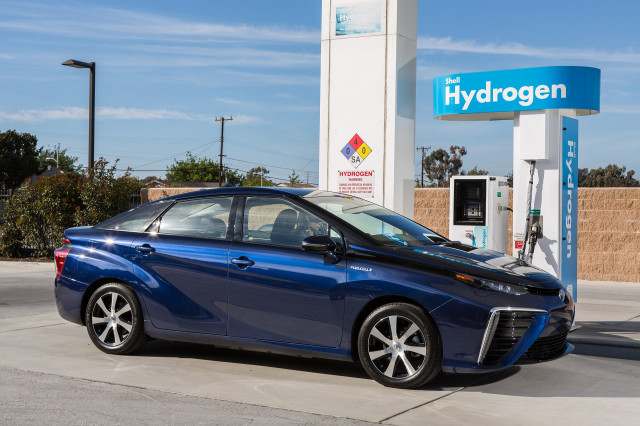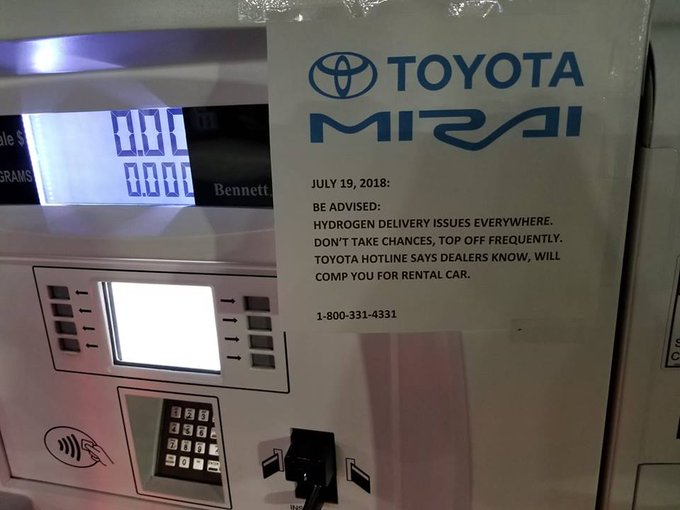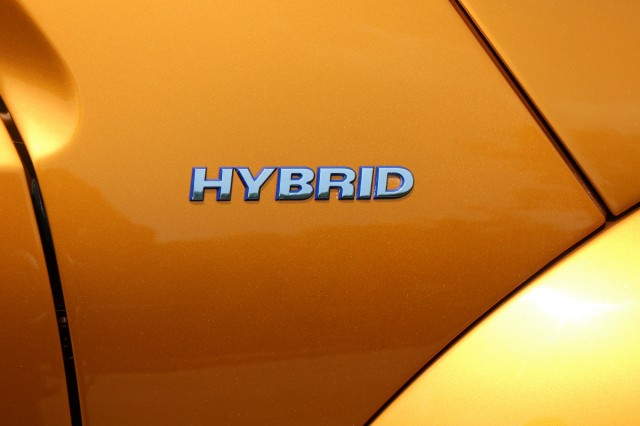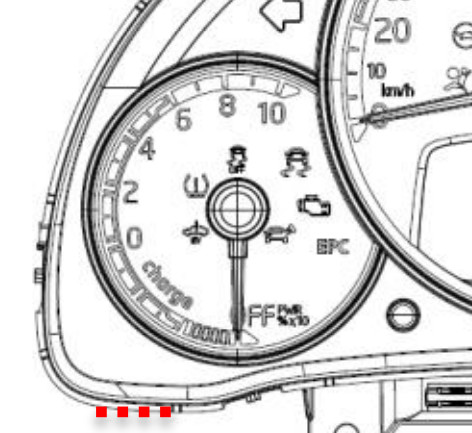The biggest challenge to driving a fuel-cell car is finding fuel.
Automakers who sell fuel-cell models—Toyota, Honda, and Hyundai for now—have made progress in getting 33 hydrogen fueling stations built around Los Angeles and San Francisco.
It's not helping drivers this week though. According to a photo tweeted by user Paolo NonVTEC Acoba, the hydrogen pumps around LA are out of fuel.
A large sign on a hydrogen pump in LA, dated last Thursday and addressed to Toyota Mirai owners, reads: "Be advised: Hydrogen delivery issues everywhere. Don't take chances, top off frequently. Toyota hotline says dealers know, will comp you for rental car."
It may be easy to advise drivers to top off frequently; not so easy to do if all the surrounding stations are out of fuel.
"Toyota is aware that certain fuel-cell vehicle owners in the Los Angeles area are currently experiencing refueling challenges because of limited hydrogen supply at several local fueling stations. While the station operator works to resolve this short-term issue, we are working with our Mirai (fuel-cell car) customers to help identify alternative fueling options, including as a temporary measure, opening our commercial hydrogen fueling station at the Port of Long Beach...We sincerely regret the current inconvenience for our customers," Toyota said in a statement emailed to Green Car Reports.
It's not immediately clear from the statement whether Toyota is offering rental cars for Mirai owners.
The problem has been traced to a problem with hydrogen supplies delivered by chemical provider Air Products.
"We are actively working to resolve this unexpected disruption, which has been caused by a contemporaneous series of unrelated issues at several liquid hydrogen production and supply sites. We are addressing the matter as rapidly as we can and are hopeful to have the situation remedied and have restored regular hydrogen supply in the early days of August. We regret any inconvenience that may have resulted.... We regret any inconvenience fueling customers may be currently experiencing, and reassure you we are focused on resolving the issue as soon as possible," Air Products spokesman Arthur George said in an email.
Securing a a clean, affordable, and reliable, source of sufficient hydrogen supplies has always been the biggest challenge for fuel cell cars, and this shortage could give potential fuel-cell car buyers pause, just as the cars—and pumps to fuel them—are becoming more widely available.




























